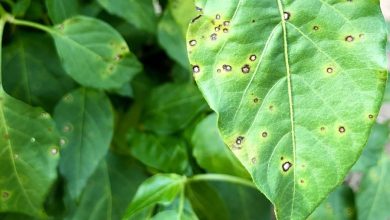Pests and Diseases of Garlic: [Detection, Causes and Solutions]
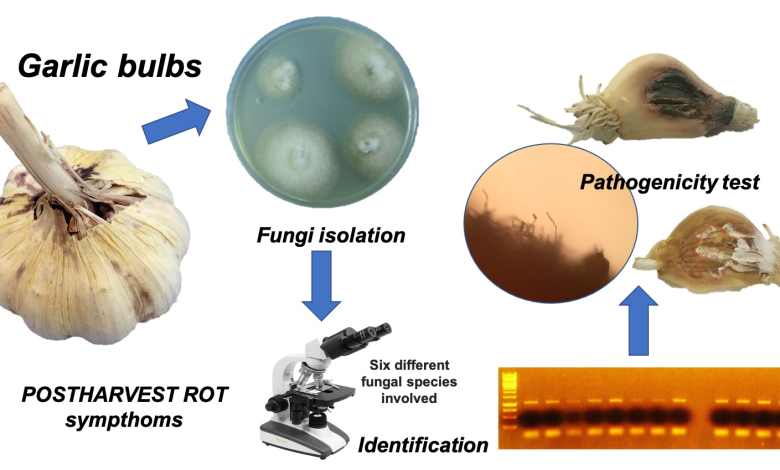
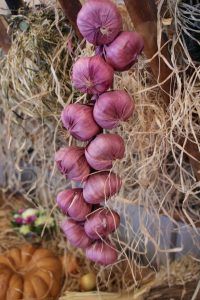 Garlic is one of the most numerous crops that exist around the world because it is a food with many properties and exquisite flavor.
Garlic is one of the most numerous crops that exist around the world because it is a food with many properties and exquisite flavor.
In any kitchen, whether high-end or homemade, garlic is one of the essential ingredients and that is why having it in a garden is the desire of many.
But how to ensure that the crops are of excellent quality? Giving it the recommended care and preventing attacks by pests and diseases.
And to be up to date on this matter, we leave you this information that will be very useful when something does not go well with your crop.
onion fly
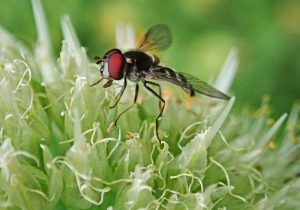 One of the main characteristics of garlic cultivation is that it is usually a victim of the same pests that attack onions, which is why we mention this type.
One of the main characteristics of garlic cultivation is that it is usually a victim of the same pests that attack onions, which is why we mention this type.
Its action begins by laying the eggs on the ground around the garlic plant or on its neck.
Subsequently, the larvae that are born are responsible for generating damage to the green parts of the fruit, as well as to the flowers of the plant.All this causes the leaves to dry out and the plant to lose vitality, dying as a final consequence.
The method to combat it is more preventive than corrective, choosing healthy seeds and disinfecting them before sowing.In any case, with natural pesticides it will be possible to deal with the attack if it were to occur.
It has the property of hibernating in the winter, so its eradication must be carried out in detail to avoid new problems next spring.
green rot
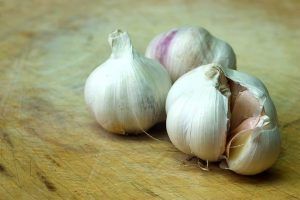 It is a disease that has the property of altering the correct constitution of the garlic cloves.
It is a disease that has the property of altering the correct constitution of the garlic cloves.
A kind of white fuzz is generated on them that varies in color as the effects progress until it becomes bluish green.
In the structure of the plant, the situation is not much more positive, since it causes a decay of the whole plant.If the disease strikes when the plant is not very developed, stagnation and retardation occur.
The worst thing is that green rot can be a gateway for other diseases , such as nematodes.Attacking it is not an easy task and you will only be able to advance with the use of approved chemical products to combat its effects.
red worm
 It is one of the most worrying pests when it comes to planting garlic because its effects will not be noticed until harvest time.
It is one of the most worrying pests when it comes to planting garlic because its effects will not be noticed until harvest time.
It has the property of maintaining a life at night, laying its eggs around the base of the plant.
When the eggs hatch, what happens is that the larvae dive into the ground in search of the bulb, which they enter, forming small galleries.
As the larval activity progresses, the garlic cloves are consumed until they completely disappear.If the effect is greater, it is possible to lose the entire heads.
When it has nothing more to consume, it looks for a hiding place to stay protected during the winter to appear in the next spring.
garlic weevil
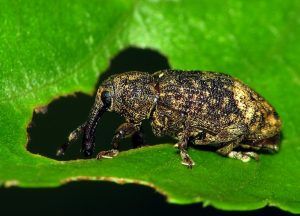 These are insects that are common to see attacking garlic plants in the spring.
These are insects that are common to see attacking garlic plants in the spring.
They are quite small, with a maximum length of 5 mm and a dark brown to black colour.
However, its larvae are white and these have the property of completely destroying the bulbs , causing the loss of the harvest.
To deal with them, the only alternative is to carry out the application of chemical products that are suitable to treat them.
nematodes
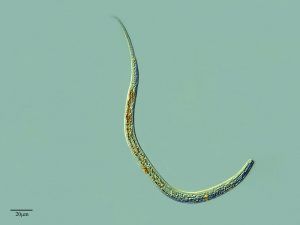 These are parasites that infect the roots of plants, producing protuberances that prevent the correct distribution of nutrients.
These are parasites that infect the roots of plants, producing protuberances that prevent the correct distribution of nutrients.
They may also use plant stems as a food source , causing even greater crop losses.
As it is a highly harmful action, the plants tend to die without having fully developed.The parasite lives in the soil, so an appropriate action to prevent its appearance has to do with crop rotation.
Another good strategy is to disinfect the area before sowing and use high-resistance seeds.When the attack is not very numerous, it is best to implement a strategy known as solarization.
This consists of covering the soil with plastic so that, due to the action of the sun, the temperature increases and parasites are eliminated.
Rust
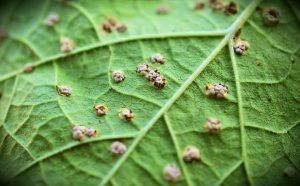 It is a disease that usually attacks crops such as garlic and very similar crops such as chives.
It is a disease that usually attacks crops such as garlic and very similar crops such as chives.
It has the peculiarity of producing red spots on the leaves that later darken until they look more like violets.
This effect is very harmful because in a short time it causes the leaves to dry and the plant, therefore, to die.In not so complex cases, it can produce a rapid ripening of the fruit, leaving them smaller than expected.
The good news is that it is a treatable disease with natural mixtures such as oil with water.In case this does not work, the natural chemical action is also approved.
white rot
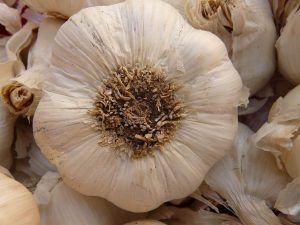 It is a disease that attacks plants from the roots, completely destroying the root system of the plant.
It is a disease that attacks plants from the roots, completely destroying the root system of the plant.
It is produced by a fungus that forms its mycelium from the ground and whose effects gradually reach each part of the plant.
In the aerial zones it tends to produce an evident white hairiness.Later, the leaves turn yellow and end up drying out , affecting the photosynthetic processes necessary for their well-being.
The worst thing is that white rot is a gateway for plants to also suffer from mildew attack.When it comes to treating it, the only proven way that has positive effects is with the use of chemical products such as benomyl , which should be applied as soon as the first symptoms are noticed.
Garlic harvests are usually numerous and the least that is expected is that their vitality is affected by pests or diseases.Hence the importance of being well informed about the symptoms and, above all, about the appropriate treatments to deal with them.

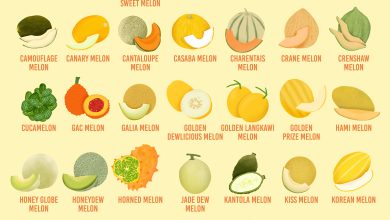
![Photo of Bidens: [Cultivation, Irrigation, Care, Pests and Diseases]](https://www.complete-gardening.com/wp-content/uploads/2022/08/bidens-cultivation-irrigation-care-pests-and-diseases-390x220.jpg)
![Photo of 23 Resistant Outdoor Plants: [List, Characteristics and Care]](https://www.complete-gardening.com/wp-content/uploads/2022/08/23-resistant-outdoor-plants-list-characteristics-and-care-390x220.jpg)
